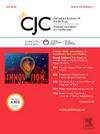Transfusion in Anemic Patients With Acute Coronary Syndromes: A Population-Based Cohort Study
IF 5.8
2区 医学
Q1 CARDIAC & CARDIOVASCULAR SYSTEMS
引用次数: 0
Abstract
Background
There is controversy surrounding the effectiveness of red blood cell (RBC) transfusion for treating anemia in patients hospitalized for acute coronary syndromes (ACS), particularly as hemoglobin (Hb) levels approach and drop below the range of moderate anemia.
Methods
This population-based cohort study followed all adults hospitalized for ACS who experienced an in-hospital nadir Hb between 6.0 and 8.9 g/dL between April 1, 2012, and March 31, 2021, in Ontario, Canada. Patients were excluded if they underwent coronary artery bypass graft surgery or had history of dementia, palliative care, or long-term care. Transfused patients were compared with nontransfused patients. The primary outcome was a composite of all-cause death and hospitalization for myocardial infarction (MI) within 30-days of hospital discharge. Overlap propensity score weighting was used to account for confounding and to emphasize the comparison in patients for whom there is clinical equipoise.
Results
This study included 7922 patients, of whom 3498 were transfused and 4424 were not transfused. In the propensity-weighted cohort, the mean nadir Hb for each group was 7.75 g/dL. The 30-day cumulative incidence rate for the primary outcome after application of propensity score weights was 28.6% in the transfusion group and 33.3% in the no-transfusion group (hazard ratio [HR], 0.83, 95% confidence interval [CI], 0.75-0.91), which persisted at 1 year after hospital discharge and across sensitivity analyses.
Conclusions
In patients hospitalized for ACS who experience nadir Hb levels between 6.0 and 8.9g/dL, RBC transfusion was associated with a reduction in the composite event of all-cause death and hospitalization for MI within 30-days after hospital discharge.

急性冠状动脉综合征贫血患者的输血:基于人群的队列研究。
背景:输注红细胞治疗急性冠状动脉综合征(ACS)住院患者贫血的效果存在争议,尤其是当血红蛋白水平(Hb)接近或低于中度贫血范围时:这项基于人群的队列研究对加拿大安大略省 2012 年 4 月 1 日至 2021 年 3 月 31 日期间因急性冠状动脉综合征住院的所有成人患者进行了追踪调查,这些患者的院内最低 Hb 值介于 6.0-8.9g/dL 之间。接受过冠状动脉旁路移植手术或有痴呆症、姑息治疗或长期护理史的患者不包括在内。输血患者与非输血患者进行了比较。主要结果是全因死亡和出院后 30 天内因心肌梗死(MI)住院的复合结果。研究采用重叠倾向评分加权法来考虑混杂因素,并强调对临床等效的患者进行比较:本研究共纳入 7922 名患者,其中 3498 人输血,4424 人未输血。在倾向加权队列中,每组患者的平均最低 Hb 值均为 7.75g/dL。应用倾向评分权重后,输血组的主要结局30天累积发生率为28.6%,不输血组为33.3%(危险比[HR]:0.83,95%置信区间[CI]0.75-0.91),出院后1年及各种敏感性分析均显示出这一结果:对于 Hb 水平在 6.0-8.9g/dL 之间的 ACS 住院患者,输注红细胞可降低出院后 30 天内全因死亡和心肌梗死住院的复合死亡率。
本文章由计算机程序翻译,如有差异,请以英文原文为准。
求助全文
约1分钟内获得全文
求助全文
来源期刊

Canadian Journal of Cardiology
医学-心血管系统
CiteScore
9.20
自引率
8.10%
发文量
546
审稿时长
32 days
期刊介绍:
The Canadian Journal of Cardiology (CJC) is the official journal of the Canadian Cardiovascular Society (CCS). The CJC is a vehicle for the international dissemination of new knowledge in cardiology and cardiovascular science, particularly serving as the major venue for Canadian cardiovascular medicine.
 求助内容:
求助内容: 应助结果提醒方式:
应助结果提醒方式:


